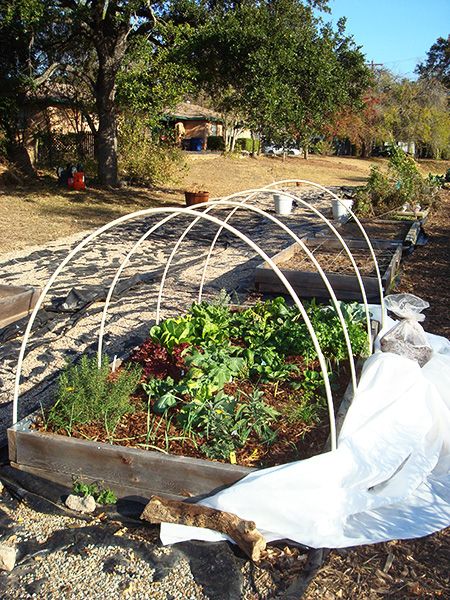Unlike the northern United States, where snow and hard freezes make winter gardening difficult if not impossible, winter gardening in Central Texas is relatively easy and enjoyable. There are many cold-hardy vegetables that, if cared for properly, survive our soft freezes and even benefit from them. With lower temperatures come fewer pests, and mild weather makes winter an ideal time to spend long hours in the garden amending the soil, mulching, tending established plants and even sowing seeds.
While Austin’s lowest recorded temperature is −2°F, the average winter low is 27°F, a temperature easily weathered by most cold-season vegetables. Frost tolerant broccoli and cabbage thrive in temperatures as low as 26°F. Chard can handle temperatures as low as 15°F, and kale, lettuce, and turnips do not mind temperatures as low as 10°F. Carrots, spinach, leeks, collards, and parsnip will survive even when temperatures drop to 0°F. Indeed, many cold-season vegetables, including carrots, parsnips and Brussel sprouts, benefit from a good freeze as it sweetens their flavor. The trick is to start your winter vegetables in the fall, at least six weeks before the first frost, which usually occurs in late November or early December. By doing so, you ensure that your plants have established root systems, enabling them to survive the cold.
If you have not yet started your winter garden, do not despair! Some seeds can be sown throughout winter, including lettuce, spinach, radish and Asian greens. When expecting a freeze, saturate the soil around all your plants, including established ones (this helps regulate soil temperatures), and mulch the soil with a thick layer of leaves or straw. You can also cover your plants with a sheet, just remember to remove the sheet when the freeze is over and the sun comes out so that your winter garden continues to grow.

